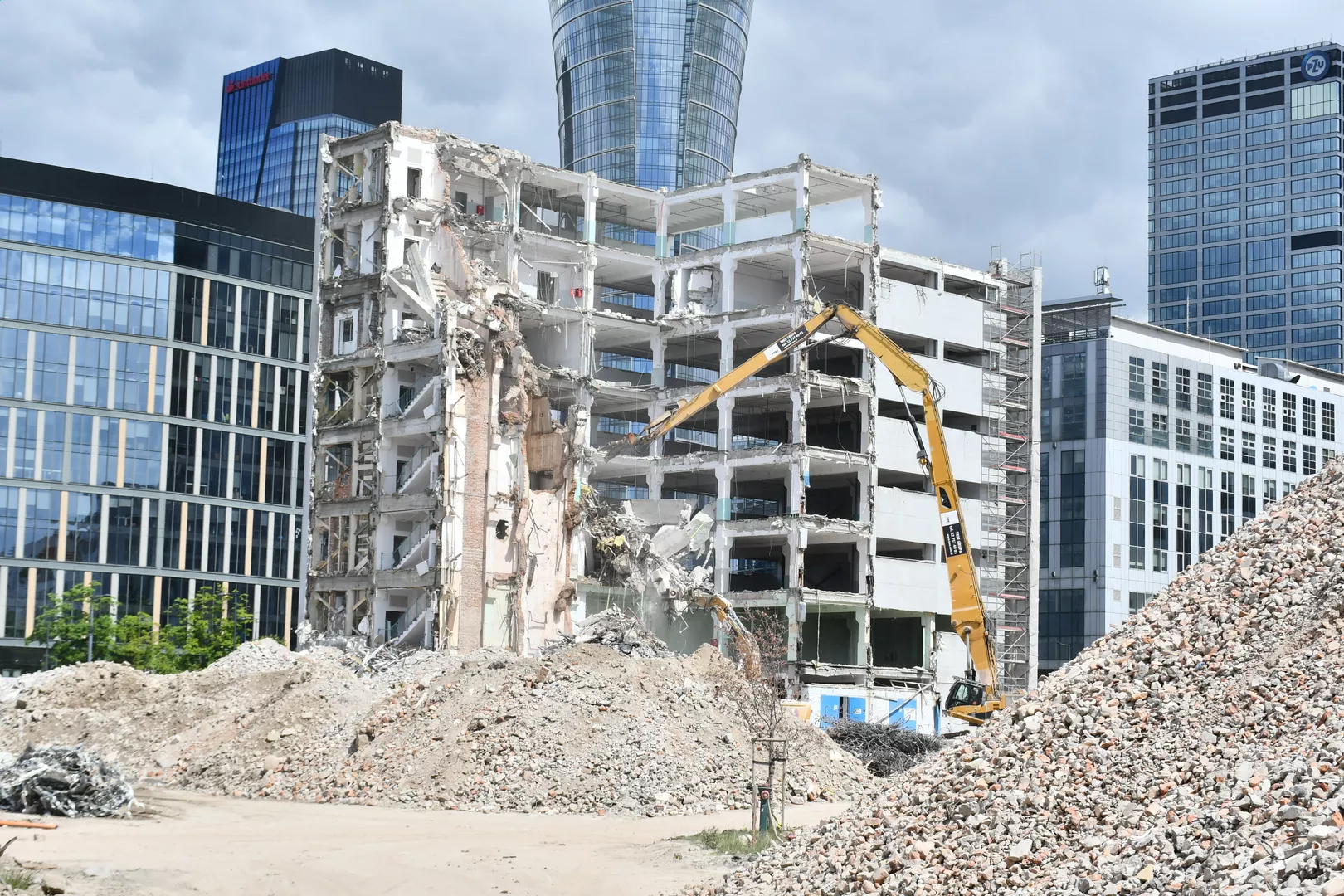
Effective Planning of Construction and Demolition Projects - Comprehensive Guide
A comprehensive guide to methodologies and best practices for planning construction and demolition projects. Learn how to effectively plan each stage of the project - from preliminary analysis, through scheduling and budgeting, to risk management. Di
Effective Planning of Construction and Demolition Projects - Comprehensive Guide
Introduction
Planning a construction or demolition project is the foundation of its success. A well-prepared plan minimizes the risk of unforeseen problems, optimizes costs and implementation time, and ensures compliance with standards and regulations. In this comprehensive guide, we present proven project planning methods that will enable the effective implementation of construction and demolition investments.
Key stages of construction and demolition project planning
- Preliminary analysis and feasibility study
- Assessment of location and terrain conditions
- Geological and geotechnical analysis
- Preliminary calculation of costs and benefits
- Identification of potential threats and limitations
- Determining the scope and objectives of the project
- Precise determination of investor requirements
- Defining project success criteria
- Setting milestones
- Establishing priorities and task hierarchy
- Resource planning
- Identification of necessary equipment and machinery
- Planning the project and execution team
- Determining material needs
- Planning logistics and transportation
- Creating a schedule
- Determining the sequence of work and dependencies between tasks
- Estimating the duration of individual stages
- Including a time buffer for unforeseen circumstances
- Optimization of the project's critical path
- Budget planning
- Detailed calculation of direct costs
- Inclusion of indirect and general costs
- Financial flow planning
- Creating financial reserves for unforeseen expenses
- Risk management
- Identification of potential threats
- Assessment of the probability and impact of risks
- Planning risk response strategies
- Continuous monitoring of threats
Construction project planning methodologies
- Traditional (waterfall) methodology
- Sequential planning and implementation of project stages
- Strict control of deadlines and budget
- Detailed documentation of each stage
- Application: projects with clearly defined scope and low risk of changes
- Agile methodology
- Flexible approach to planning and implementation
- Iterative improvement of the plan during implementation
- Quick response to changes and unforeseen circumstances
- Application: innovative projects or those with a high degree of uncertainty
- Lean Construction methodology
- Minimization of waste (time, materials, energy)
- Optimization of processes and workflow
- Continuous improvement and learning
- Application: projects focused on efficiency and sustainable development
- BIM (Building Information Modeling) methodology
- Digital modeling of the entire building life cycle
- Integration of design, cost, and schedule data
- Visualization and simulation of construction processes
- Application: complex projects requiring advanced interdisciplinary coordination
Tools supporting project planning
- Project management software
- MS Project, Primavera, Planview
- Features: scheduling, progress tracking, resource management
- Benefits: better control over the project, automatic schedule updates
- BIM and CAD tools
- Autodesk Revit, ArchiCAD, Tekla Structures
- Features: 3D modeling, collision detection, construction simulations
- Benefits: elimination of design errors, better interdisciplinary coordination
- Budget management tools
- CostX, Sage, Procore
- Features: cost estimation, expense control, forecasting
- Benefits: more accurate cost estimation, budget control
- Communication and collaboration platforms
- Microsoft Teams, Slack, Trello, Asana
- Features: team communication, document sharing, task tracking
- Benefits: better communication, project transparency, faster decision-making
Specifics of demolition project planning
- Assessment of the technical condition of the object
- Structural and material tests
- Identification of hazardous materials (asbestos, PCB)
- Determining the demolition method based on the object's condition
- Photographic and technical documentation of the initial state
- Planning selective demolition
- Disassembly sequence (from top to bottom)
- Segregation of materials for recycling
- Minimization of dust and noise
- Securing temporary structures
- Planning logistics and waste disposal
- Estimation of the amount and types of waste
- Organization of containers and storage areas
- Planning transport routes and removal schedule
- Waste management documentation
Planning risk management in construction projects
- Technical risk
- Unforeseen ground conditions
- Errors in project documentation
- Equipment and machinery failures
- Mitigation strategies: ground surveys, documentation reviews, backup equipment
- Environmental risk
- Extreme weather conditions
- Land contamination
- Impact on surroundings (noise, dust, vibrations)
- Mitigation strategies: weather monitoring, environmental studies, protective technologies
- Legal and administrative risk
- Delays in obtaining permits
- Changes in regulations during implementation
- Social protests
- Mitigation strategies: early start of procedures, experienced legal consultants
- Financial risk
- Increase in prices of materials and services
- Problems with financial liquidity
- Payment delays
- Mitigation strategies: budget reserves, valorization clauses, financial securities
Planning communication in the project
- Internal communication plan
- Reporting structure
- Team meeting schedule
- Communication platforms and tools
- Problem escalation procedures
- External stakeholder communication plan
- Communication with the investor and client
- Informing the local community
- Cooperation with subcontractors and suppliers
- Contacts with administrative bodies
Case study: Comprehensive planning of industrial facility demolition
The project involved the demolition of a former chemical factory with an area of 25,000 m² located in an urban area. Thanks to comprehensive planning, the following results were achieved:
- Implementation time: Reduced demolition time by 3 months compared to the original schedule
- Safety: Zero accidents during implementation due to a detailed health and safety plan
- Recycling: 87% of materials were recovered for reuse
- Costs: 22% budget savings due to optimization of logistics processes
- Environment: Minimized impact on surroundings through the use of noise and dust reduction technologies
Key success factors:
- Detailed inventory of the facility before starting work
- Use of a 3D model to simulate the demolition process
- Daily schedule updates and response to deviations
- Involvement of experienced subcontractors and consultants
Best practices in project planning
- Involving all stakeholders from the early planning stages
- Consultations with the client, designers, contractors
- Verification of assumptions by experienced specialists
- Consideration of opinions from the local community and administrative bodies
- Detailed planning with appropriate reserves
- Realistic estimation of task duration
- Time buffers on critical tasks
- Financial reserves (10-15% of the budget)
- Alternative action plans for key threats
- Continuous updating and optimization of the plan
- Regular reviews and schedule updates
- Adjusting the plan to the actual progress of work
- Analysis of deviations and drawing conclusions
- Process optimization based on experience
Summary
Effective planning of construction and demolition projects requires a comprehensive approach, taking into account technical, legal, environmental, and financial aspects. The methodologies, tools, and best practices presented in this guide allow for risk minimization, cost optimization, and timely implementation of even the most complex projects.
Tree Group offers professional planning services for construction and demolition projects, utilizing years of experience and advanced technologies. Our approach to project planning guarantees their effective implementation in accordance with client requirements, legal regulations, and sustainable development principles.
Tags
Share this guide
About the author
mgr inż. Michał Kowalski
Strategic Planning Specialist at Tree Group
Category
Project Planning
Reading time
15 minutes
Publication date
March 21, 2025
Similar guides

How to Develop a Comprehensive Building Demolition Plan Using BIM Technology 2025
Discover revolutionary approach to demolition planning using BIM technology. Guide shows how Building Information Modeli...

Legal Documentation and Demolition Permits - Complete Guide 2025
Complete guide to legal procedures and documentation required for demolition permits in 2025. Learn current requirements...